Embarking on your first hike is an exhilarating adventure, cocooned in nature while challenging your physical and mental capabilities. But entering this unique world requires meticulous preparation and an understanding of the basics to ensure a safe and enjoyable journey. From packing smartly to treading safely, every piece of knowledge will transform into a useful tool as you navigate your way through the United Kingdom’s stunning trails. Whether you are discovering the Scottish Highlands or exploring the enthralling terrain of Snowdonia, this beginner’s guide on hiking essentials will prepare you to face what lies ahead on your new path. Let’s take those firm first steps towards an unforgettable encounter with the great outdoors!
The basics of hiking include choosing an appropriate trail, bringing essential gear such as water, a map, compass, first-aid kit, food, and proper hiking shoes. It is also important to pace yourself during hikes, dress appropriately for the weather and terrain, and be aware of your surroundings at all times.
Hiking Essentials: Gearing Up
When venturing into the world of hiking, having the right gear can make all the difference in ensuring a safe and enjoyable experience. Gearing up properly entails considering various aspects, such as backpack selection, clothing choices, and footwear options. Let’s dive into these essential elements to help you prepare for your hiking adventures.
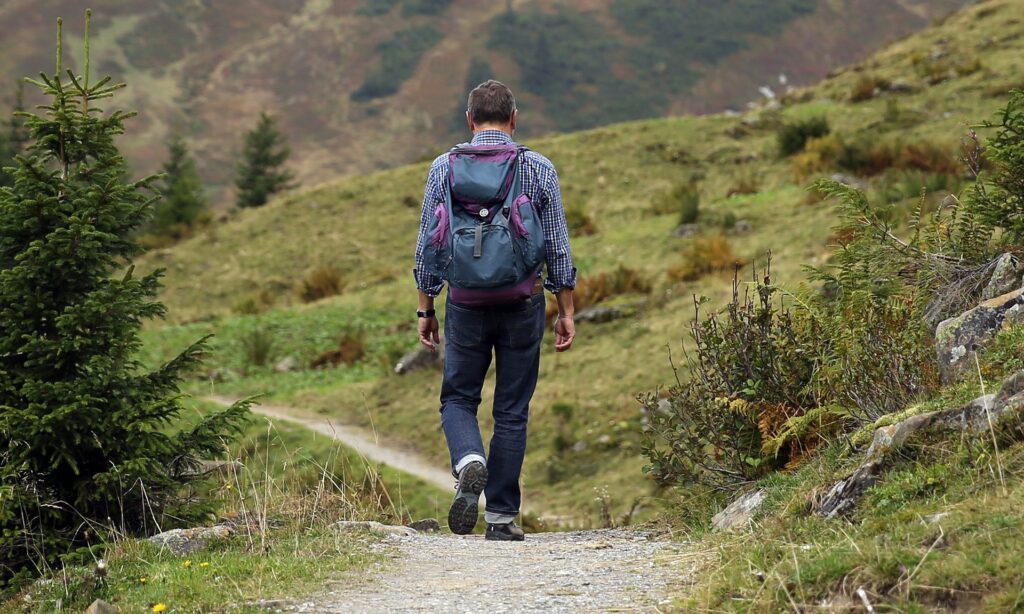
Backpack Selection
Choosing the right backpack is crucial as it will be your trusted companion throughout your hikes, carrying all your essentials. When selecting a backpack, consider factors like capacity, fit, comfort, and features that align with your needs.
The first aspect to assess is the capacity of the backpack. This refers to how much gear the backpack can hold. Smaller daypacks ranging from 20-35 litres are suitable for shorter hikes where you only need to carry essentials like water, snacks, and extra layers. On the other hand, multi-day backpacking trips may require larger packs ranging from 50-75 litres to accommodate camping gear, cooking equipment, and additional clothing.
Next, fit is crucial for optimal comfort on your hikes. Look for adjustable straps on the shoulder harness and hip belt that allow you to customise the fit to your body shape and size. A well-fitted backpack will distribute weight evenly across your hips and shoulders, reducing strain on your back.
Comfort features such as padding, ventilation, and load-bearing support also play a significant role in enhancing your hiking experience. Look for backpacks with padded shoulder straps and hip belts that offer cushioning during long treks. Ventilated back panels promote breathability by allowing air circulation between your back and the pack. Additionally, reinforced frames or internal support systems help distribute weight efficiently and improve stability on uneven terrain.
Consider a scenario where you’re embarking on a weekend backpacking trip through rugged mountain trails with unpredictable weather conditions. In this case, a 50 or 60-litre backpack with adjustable straps, ample padding, and a ventilated back panel would be an ideal choice. These features will ensure you can comfortably carry your camping gear, clothing layers, food supplies, and other necessities while maintaining stability on challenging terrain.
Now that we have explored the importance of backpack selection in gearing up for hiking adventures let’s move on to another crucial aspect: clothing choices.
- When selecting a backpack for hiking, it’s essential to consider factors like capacity, fit, comfort, and features that align with your needs. Look for adjustable straps on the shoulder harness and hip belt for customising the fit, padded straps for cushioning during long treks, ventilated back panels for breathability, and reinforced frames or internal support systems to distribute weight efficiently. Choosing the right backpack can improve your hiking experience and help maintain stability on challenging terrain.
Ideal Clothing and Footwear Choices
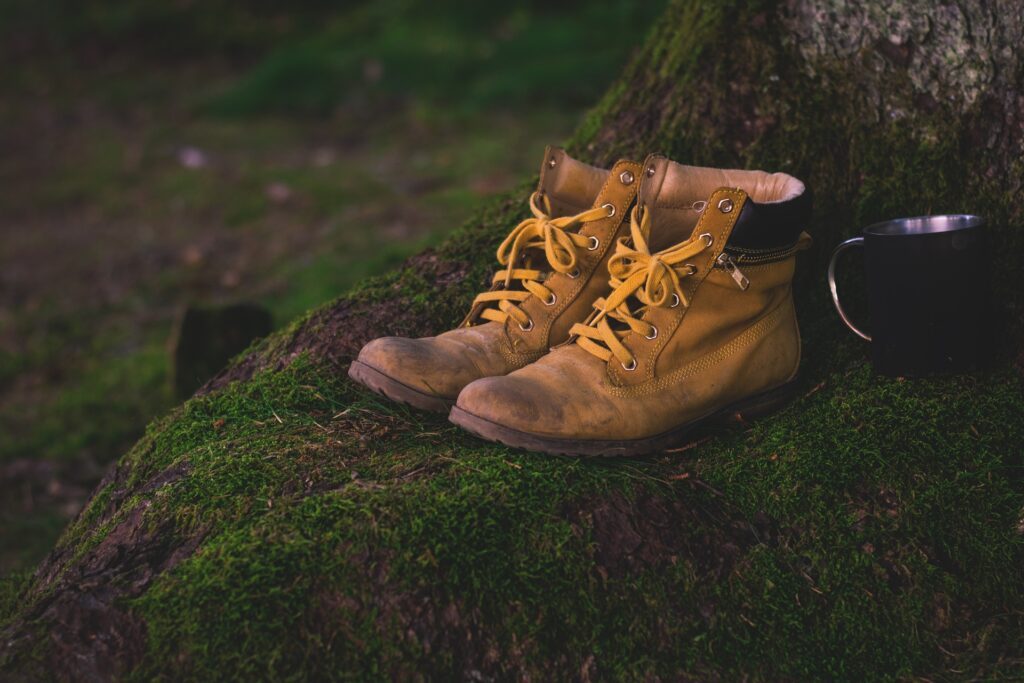
When it comes to hiking, having the appropriate clothing and footwear can make a world of difference in your comfort and overall experience. Let’s begin by discussing the ideal choices for clothing.
It’s crucial to opt for clothing that is both comfortable and functional. Consider investing in versatile items such as convertible pants that can be zipped off into shorts, allowing you to adapt to changing weather conditions and temperature fluctuations. Brands like KUHL Renegade offer great options for convertible pants.
Next, focus on selecting moisture-wicking fabrics that will keep you dry and comfortable throughout your hike. Look for shirts made from breathable materials like nylon or polyester blends. The KUHL Engineered Hoodie is an excellent example of a lightweight and breathable option.
Don’t overlook the importance of quality socks. Darn Tough Hiker Micro Crew Cushion socks provide cushioning and moisture-wicking properties to help prevent blisters and keep your feet comfortable during long hikes.
Now let’s shift our attention to footwear. Your choice of hiking shoes or boots plays a vital role in providing comfort, stability, and protection for your feet.
One highly recommended option is the HOKA Speedgoat 5, which offers exceptional support and traction over rugged terrain. With their cushioned soles and lightweight construction, these shoes are designed for long-distance hikes while minimising foot fatigue.
Remember that proper fit is essential when selecting hiking footwear. Take the time to try on different brands and models to find a pair that fits comfortably without causing any discomfort or hot spots during your hike.
For instance, imagine yourself trekking through a rocky mountain trail with ill-fitting shoes. Your feet would quickly become sore, increasing the risk of blisters, impacting your endurance level, and ultimately dampening the enjoyment of your adventure.
Trail Safety and Preparation
Before embarking on any hiking adventure, it’s essential to prioritise safety by adequately preparing yourself. Let’s explore some key aspects of trail safety and preparation.
First and foremost, research the trail you plan to hike. Obtain maps of the area, read trail descriptions, and familiarise yourself with potential hazards or difficulties you may encounter along the way. Websites such as AllTrails or GaiaGPS can provide valuable information about various trails and their difficulty levels.
Next, check the weather forecast for the day of your hike. Be prepared for changing conditions by packing appropriate gear like a rain shell, rain pants, a hat, sunglasses, and sunscreen. The Black Diamond StormLine Stretch Rain Shell and REI Co-op Trailmade Rain Pants are reliable options for staying dry in wet weather.
Always inform someone about your hiking plans. Provide them with details such as the trail’s name, expected duration of your hike, and the estimated time of return. This precaution ensures that someone is aware of your whereabouts in case of an emergency.
Additionally, carry essentials like plenty of water (using a reusable bottle coupled with a Sawyer Squeeze Water Philtre System), nutritionally dense snacks (such as salted nuts or energy gels), navigation tools using smartphone apps like AllTrails or GaiaGPS (or even a Garmin GPS watch), a headlamp like the Nitecore NU25 for emergencies or prolonged hikes, and a lightweight emergency kit equipped with essential items like a knife, lighter, whistle, and small medical supplies.
Imagine hiking in a remote area without informing anyone of your plans. In the event of an unexpected injury or delay, rescuers would have no knowledge of your whereabouts, making it challenging to receive timely assistance.
Lastly, always prioritise Leave No Trace principles while hiking. Practise responsible behaviour by staying on the designated trail, packing out all trash, and avoiding unnecessary disturbances to the natural environment.
By following these safety guidelines and adequately preparing yourself, you’ll be better equipped to handle potential challenges that may arise during your hike. Remember, your safety should always be the top priority.
Building Physical and Mental Resilience
Before embarking on your hiking journey, it’s crucial to build both physical and mental resilience. Hiking can be a demanding activity that requires endurance, strength, and adaptability. Let’s explore some essential tips to help you prepare for the physical and mental challenges that lie ahead.
First and foremost, consider incorporating regular exercise into your routine. Start with activities that closely mimic the motion and intensity of hiking, such as climbing stairs or walking uphill on a treadmill. Gradually increase your workout duration and intensity to build stamina. Incorporate strength training exercises, focusing on your lower body muscles like quadriceps, calves, and glutes. Engaging in activities like yoga or Pilates can also improve your balance and flexibility.
Another crucial aspect of building resilience is preparing mentally for the hike. Hiking can throw unexpected obstacles in your path, both physically and mentally. Visualise yourself overcoming challenges – steep inclines, uneven terrain, or fatigue – before setting out on a hike. This mental preparation will help you stay focused and determined when faced with difficulties along the trail.
Remember that hiking is not just about physical fitness but also about mental well-being. Nature has therapeutic effects, reducing stress levels and boosting mood. Take this opportunity to unplug from screens and immerse yourself in the natural beauty around you. Embrace the peacefulness of the outdoors and use it as an opportunity for reflexion and self-discovery.
In addition to physical and mental preparedness, don’t overlook the importance of proper nutrition and hydration during a hike. Fueling your body with nutritious food before, during, and after the hike will provide you with sustained energy levels. Pack high-energy snacks like trail mix, granola bars, or dried fruits to keep you fueled throughout the journey. Hydration is key – bring enough water (at least 1 litre per 2 hours of hiking) and make sure to drink regularly.
Building physical and mental resilience for hiking is much like preparing for any other challenge in life. Just as training for a marathon requires consistent effort, dedication, and pushing your limits, building resilience for hiking requires the same mindset. With time and practise, you’ll find yourself becoming stronger physically and mentally, ready to tackle even the toughest of trails.
Navigating a Hike: Route Planning Tips
Once you have built your physical and mental resilience, it’s time to dive into the exciting world of route planning for your hike. Proper planning ensures a safe and enjoyable experience while maximising your chances of reaching your desired destination. Here are some essential tips to help you navigate a hike successfully:
- Research the Trail: Before setting out on a hike, gather as much information as possible about the trail. Study maps, guidebooks, or online resources that provide details on the trail difficulty level, terrain features, elevation gain, and estimated duration. Understanding these factors will help you choose a hike that matches your skill level and expectations.
- Check Weather and Trail Conditions: Monitor weather forecasts leading up to your hike day to be aware of any potential storms or extreme conditions that could affect your safety. Additionally, check trail conditions for any closures or maintenance work that may hinder your progress. Adaptability is key – be prepared to change plans if necessary.
- Plan Your Timeline: Based on the trail distance, elevation gain, and estimated walking pace, create an itinerary that outlines how long it will take to complete the hike. Include planned breaks and estimate arrival times at landmarks or campsites along the way. This timeline will help you stay on track during the hike.
- Pack Essential Gear: Ensure you have all necessary hiking gear before hitting the trail. This includes appropriate footwear with good traction, layered clothing suitable for changing weather conditions, a backpack with essentials like a map, compass, first-aid kit, food, water, and navigation tools.
- Leave No Trace: Respect nature by following the principles of “Leave No Trace.” Minimise your impact on the environment by packing out all rubbish, staying on designated trails, and avoiding unnecessary noise or disturbances to wildlife.
By following these route planning tips, you’ll have a clearer understanding of the hiking trail ahead and be better equipped to navigate the journey safely and efficiently.
Monitor Weather and Trail Conditions
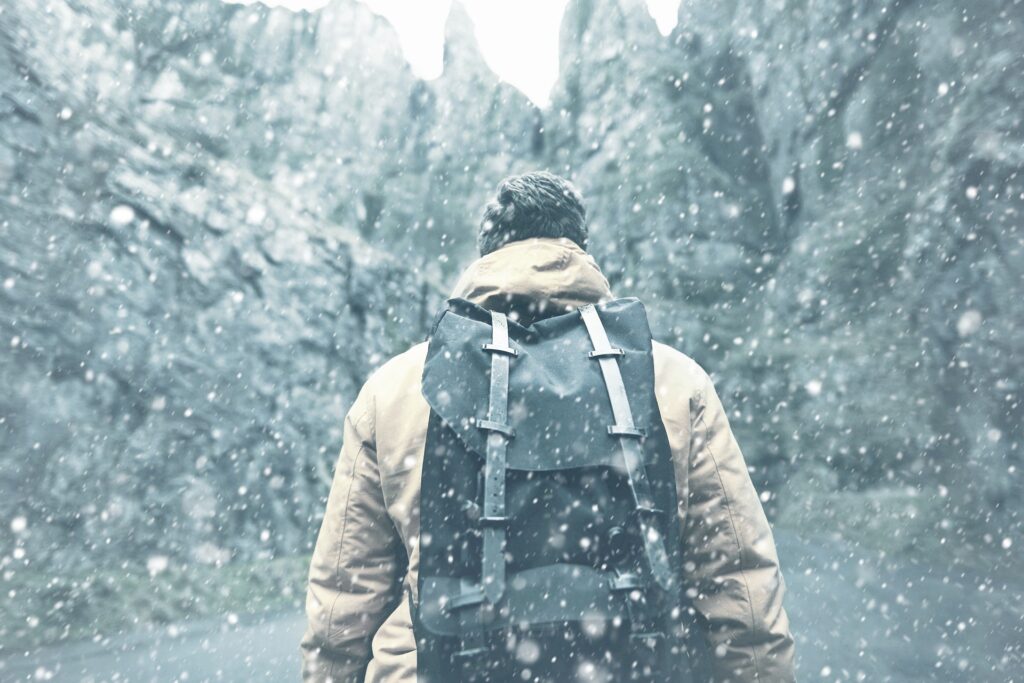
Before embarking on a hiking adventure, it is crucial to monitor weather and trail conditions to ensure your safety and preparedness. Weather can significantly impact the hiking experience, affecting visibility, terrain conditions, and potential hazards along the trail.
Start by checking the weather forecast for the area where you plan to hike. Pay attention to temperature fluctuations, precipitation chances, wind speed, and any severe weather warnings. Websites and mobile apps like AllTrails can provide real-time updates on current weather conditions in specific hiking areas, allowing you to make an informed decision about whether or not it’s safe to proceed with your plans.
Consider how the weather might influence your hiking gear selection. For instance, if there’s a chance of rain, it is important to pack waterproof layers and appropriate footwear. On hot days, dress in lightweight clothing that allows for ventilation and sun protection like hats and sunscreen. Planning accordingly based on the forecast will help prevent discomfort during your hike.
Let me share a personal experience to emphasise the importance of monitoring weather conditions. Once, I embarked on a hiking trip without checking the forecast beforehand – a mistake I would soon regret. As I ascended the trail, dark clouds gathered overhead, quickly followed by thunder and lightning. The downpour caught me off guard, leaving me sopping wet and struggling on slippery terrain. Since then, I learned my lesson and make it a habit to check the forecast before every hike.
Trail conditions can also greatly affect your hike. Factors such as recent rainfall or snowfall can impact trail surfaces, making them muddy or icy. Additionally, fallen trees or rock slides may obstruct paths and create potentially dangerous situations if not properly assessed.
To stay informed about trail conditions, research online forums or connect with local hiking communities who can offer valuable insights based on personal experiences. Websites like AllTrails provide real-time information from fellow hikers, including trail updates, reports on trail closures or obstructions, and recommendations on suitable gear for specific conditions. Being aware of any potential obstacles or hazards can help you plan your hike more effectively and avoid unnecessary risks.
Now that we understand the importance of monitoring weather and trail conditions, let’s shift our focus to another critical aspect of hiking – nutrition and hydration.
Nutrition and Hydration for Hikers
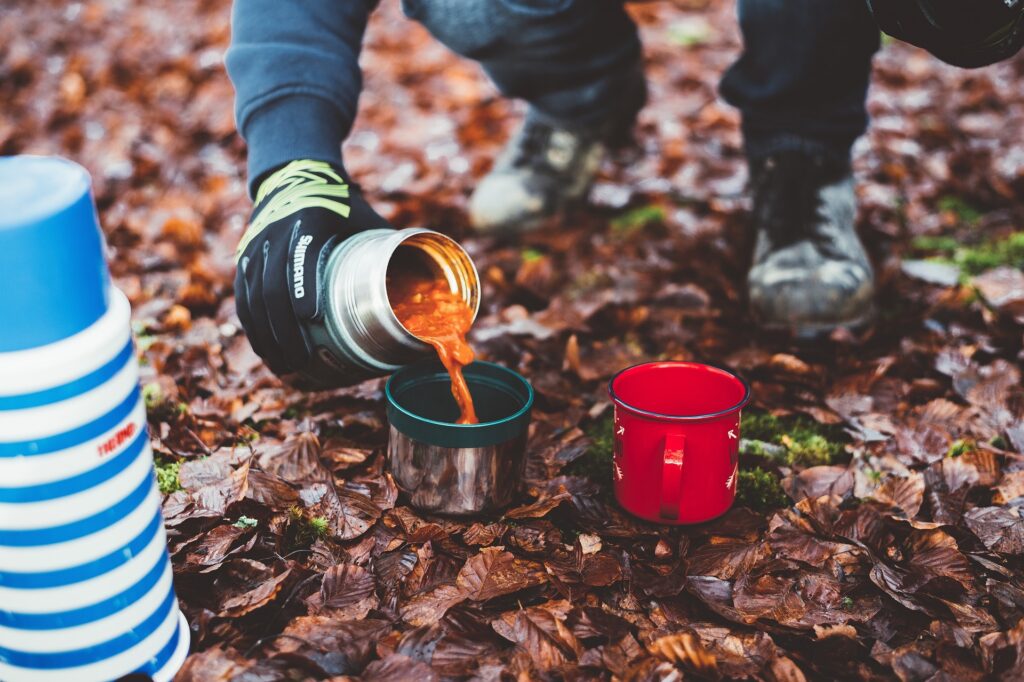
When venturing into the great outdoors for a hiking excursion, proper nutrition and hydration are essential to keep you energised, focused, and in overall good health. Hiking can be physically demanding, with the body burning calories and losing fluids through sweat. Therefore, it is crucial to fuel your body with the right foods and stay hydrated to optimise performance and prevent exhaustion or dehydration.
Think of your body as a well-oiled machine that requires the right fuel to function optimally. Just as a car needs gas to run smoothly, your body needs the right nutrients and fluids to hike efficiently.
Firstly, let’s discuss hydration. Water should be your primary source of hydration while hiking. It is recommended to bring at least two litres of water per person for a full-day hike. Investing in a reliable hydration system like a backpack with a built-in water reservoir or carrying multiple water bottles will ensure you have a sufficient supply throughout your journey. Remember to sip water regularly rather than waiting until you feel thirsty.
A mistake many beginners make is underestimating their fluid intake needs while hiking. Last summer, I joined a group of friends for an all-day hike without considering my hydration requirements adequately. After only a few hours into the hike, I began experiencing severe headaches and fatigue – clear signs of dehydration. Lesson learned – always prioritise staying hydrated!
In addition to water, packing electrolyte-replenishing beverages or chewable tablets can be beneficial, especially on longer hikes or in hot weather conditions. Electrolytes help replace essential minerals lost through sweat, maintaining proper muscle function and preventing cramping.
Now that we’ve addressed hydration, let’s delve into the importance of proper nutrition for hikers.
Snacks, Meals, and Hydration Tips
When embarking on a hiking adventure, it’s crucial to fuel your body properly with the right snacks, meals, and hydration. Long hikes can be physically demanding, so it’s essential to pack energising foods that will provide sustained energy throughout your journey.
Start by considering the duration of your hike. For shorter hikes, packing light snacks like granola bars, trail mix, or fresh fruit can be sufficient. These options are easy to carry and provide a quick boost of energy when needed. However, for longer hikes or overnight trips, it’s important to plan meals ahead of time.
Imagine trekking through a picturesque mountain trail for hours on end. The crisp air reinvigorates your senses while the breathtaking vistas inspire awe with each step. To keep up with the physical demands of such an adventure, it’s crucial to stay well-nourished throughout the journey.
So what would a typical meal plan look like for a day-long hike? Let’s break it down:
- Breakfast: Start your day with a hearty meal that includes complex carbohydrates like oatmeal or whole-grain toast. Pair them with some protein-rich foods like eggs or yoghourt to enhance satiety and provide long-lasting energy.
- Lunch: Opt for lightweight and portable options like sandwiches or wraps filled with lean protein sources (e.g., chicken, turkey) and plenty of veggies. Additionally, consider including items like nuts or cheese for added protein and healthy fats.
- Snacks: Throughout your hike, choose snacks that are not only energising but also convenient to carry and consume on the go. Dried fruits, jerky, nut butter packets, or energy bars are excellent choices. Don’t forget to pack some salty snacks too to replenish electrolytes lost through sweat.
- Hydration: Staying hydrated during a hike is paramount for maintaining performance and preventing dehydration. Carry a sufficient amount of water and consider using a hydration pack or water bottle with a built-in philtre to refill along the trail if necessary. Remember to drink regularly, even when you don’t feel thirsty.
It’s also important to listen to your body’s hunger and thirst cues while hiking. Pay attention to how you feel and adjust your food and water intake accordingly. Everyone’s dietary needs may vary, so it’s essential to find what works best for you based on your preferences, any dietary restrictions, and the demands of the hike.
Now that we have covered the importance of proper fueling during hiking adventures, let’s move on to some valuable tips for staying hydrated throughout your journey.
"Water is life. Drink plenty while hiking and enjoy the beauty of nature."
Unknown Tweet
Hydration Tips for Hiking Adventures
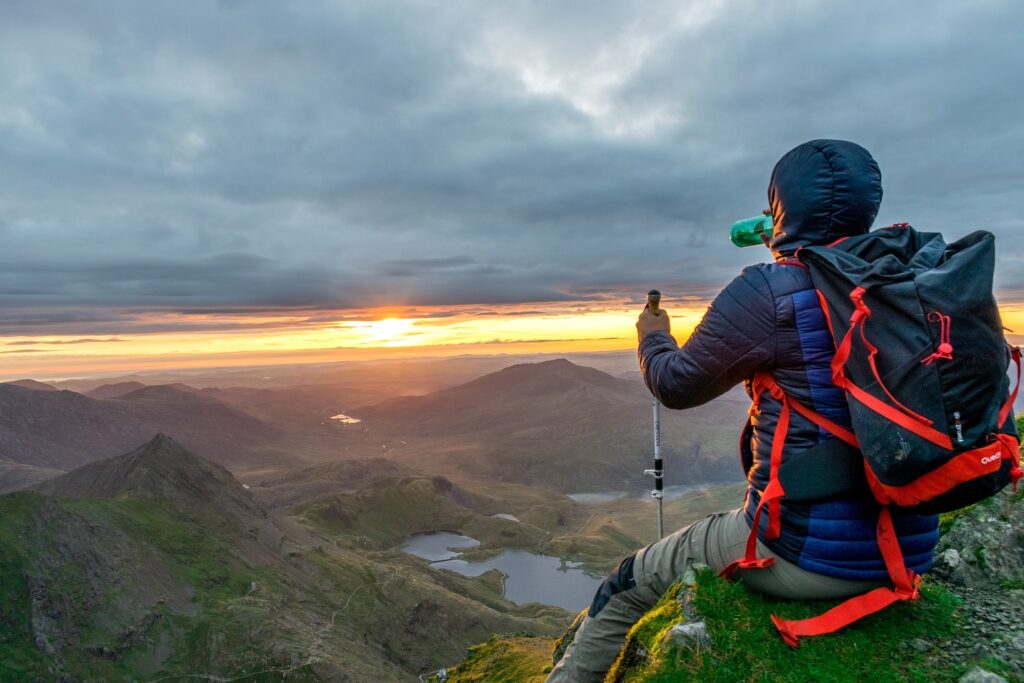
Staying properly hydrated during a hike is vital for maintaining performance, preventing fatigue, and avoiding the risk of dehydration. Here are some helpful hydration tips to keep in mind:
- Drink before you go: Start your hike well-hydrated by drinking an adequate amount of water before hitting the trail.
- Pack enough water: Carry at least 2 litres of water per person for longer hikes or hikes in hot weather conditions. Consider using a hydration bladder or water bottles with philtres for convenience.
- Set a hydrating schedule: Instead of waiting until you’re thirsty, make it a habit to take regular sips every 15-20 minutes.
- Know natural water sources: Familiarise yourself with potential freshwater sources along your route, such as streams or springs. However, ensure you have the means to treat or philtre this water before consuming it.
- Electrolyte balance: Balance plain water intake with electrolyte-rich drinks or supplements to replenish salts lost through sweating.
- Monitor urine colour: Check the colour of your urine as a hydration indicator. Pale yellow or clear urine typically indicates adequate hydration, while dark-coloured urine may mean you need to drink more fluids. This is obviously much easier for males than females.
- Prevent overheating: Stay mindful of overheating by wearing appropriate clothing, using sun protection, and taking breaks to rest in shaded areas when necessary.
By following these hydration tips, you’ll be able to maintain optimal performance, enjoy your hike to the fullest, and stay hydrated throughout your outdoor adventure.
Keeping yourself nourished and hydrated while hiking is vital for an enjoyable and safe experience. Whether it’s packing the right snacks and meals or maintaining proper hydration levels, these tips will help ensure that you have the energy and stamina to conquer any trail that comes your way.
What safety considerations should be taken into account when planning a hiking trip?
When planning a hiking trip, it is crucial to prioritise safety. Some essential safety considerations include checking weather conditions beforehand, bringing appropriate clothing and gear, carrying a first aid kit, informing someone about your itinerary, staying on marked trails, being mindful of wildlife encounters, and having knowledge of basic navigation skills.
Each month their are countless call outs to our Mountain rescue teams, just check out news for the amount we cover and we don’t manage to cover them all.
What are some common mistakes that hikers make while on the trail, and how can they be avoided?
One common mistake that hikers make is not packing enough water or food, which can lead to dehydration and fatigue. It’s important to plan and pack accordingly, making sure to carry enough water for the duration of the hike and including nutritious snacks to fuel the body. According to a study conducted by Appalachian State University, dehydration can impair cognitive performance and increase the risk of accidents on the trail. Therefore, it’s crucial to prioritise hydration and nutrition while hiking.
Another one is packing to much and carrying extra weight that isn’t needed. Its good to be prepared but proper planning means you carry the right gear. I often in younger years would carry to much gear “just in case” and meant the walks wasn’t as pleasant as had to much gear to lug around.
What essential equipment or gear is required for a successful hiking experience?
The essential equipment or gear for a successful hiking experience includes a sturdy pair of hiking boots, a backpack with proper support and ventilation, layered clothing for changing weather conditions, a reliable navigation tool (such as a map and compass or GPS device), sufficient water supply (about 2 litres per day), high-energy snacks, a first aid kit, and a headlamp or flashlight. According to a study conducted by the American Hiking Society, appropriate footwear reduces the risk of injuries by 70%, while carrying navigational tools and enough water prevents getting lost and dehydration.
Also remember where you are, a good place for beginners is the Peak District, its where I learnt but the hills aren’t as high and also your never really that far from a road or village. Compare that to the highlands of Scotland and you might be a two days hike from the nearest village.
How do different terrains and weather conditions impact the hiking experience, and what should hikers expect?
Different terrains and weather conditions significantly impact the hiking experience. In rugged terrains like mountains or forests, hikers can expect more challenging trails that require physical endurance and proper navigation skills. Weather conditions such as rain, snow, or extreme heat can affect trail conditions and pose additional risks like slippery surfaces or dehydration. According to a study by the National Park Service, weather-related incidents accounted for 31% of search and rescue operations in national parks. Hikers should be prepared with appropriate gear, stay updated on weather forecasts, and adjust their plans accordingly to ensure a safe and enjoyable hiking experience.
Also worth remembering just because its sunny and dry where you live, it doesnt mean that this i the case on the hills. Mountains by there very nature are tall and therefore have different weather and conditions. Often snow stays around much longer. There are some parts where there is snow all year, in fact for only the 10th time in 300 years has an area been snow free.
How can someone physically prepare for hiking, especially if they are new to the activity?
To physically prepare for hiking, especially for beginners, it is essential to focus on strength and endurance training. Engaging in activities such as walking or running regularly can help build cardiovascular fitness and strengthen leg muscles. Incorporating exercises like squats, lunges, and step-ups will also improve lower body strength. Additionally, core exercises like planks and mountain climbers are crucial for stability while hiking. Remember to start with shorter hikes and gradually increase the distance and difficulty level to avoid overexertion.
While I cannot provide specific statistics, studies have shown that regular physical activity can enhance cardiovascular fitness and improve overall muscular strength and endurance. With proper physical preparation, individuals can greatly enhance their hiking experience and reduce the risk of injuries.
Happy hiking.
Andy Halliday is a passionate outdoor enthusiast and an avid camper. He has been exploring the wilderness and camping in the great outdoors for over two decades, and his experiences have inspired him to write about the joys of camping and the beauty of nature.
As a camping enthusiast, he believes that spending time in the wilderness is not just a way to escape the daily grind, but also a way to connect with nature and gain a deeper appreciation for the natural world. Andy has camped in various locations across the country and on two different continents. He has a wealth of knowledge and experience to share with fellow campers.
Through his writing, he hopes to inspire you to venture out into the wilderness and experience the beauty and serenity of camping. Andy articles and guides provide useful tips, advice, and insights on everything from selecting the right gear and equipment to finding the best campsites and hiking trails.





